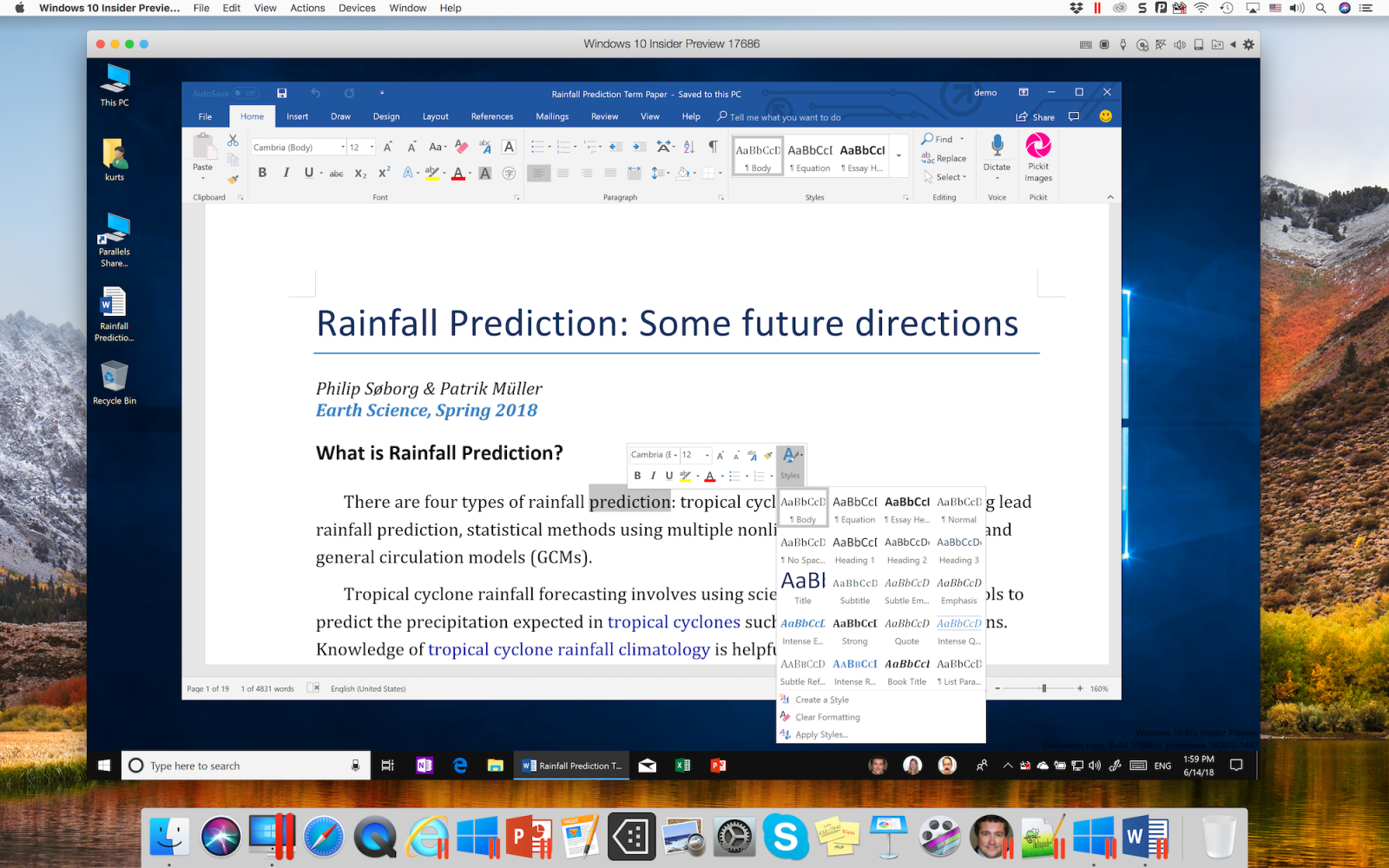Transitioning from a PC to a Mac used to be an exercise in compromises. Among the PC applications that were available for the Mac platform, some didn’t work like their Windows counterparts, some weren’t updated as often, and some simply didn’t work at all. Add to this the mystery of peripheral support, and it’s no surprise that users avoided Macs when PC software was needed.
Virtualization promised to reduce the hassle of switching, but interfaces were clunky and performance was lacking. That’s all changed with the release of Parallels Desktop 6 for Mac.
Parallels Desktop 6 is the latest version of the world-renowned and highly successful Mac OS X application Parallels Desktop for Mac.It is made by a software development company called Parallels Inc. And is defined as a software product that can provide hardware virtualization for any and all Mac computers that have Intel processors in them. Review: Parallels Desktop 13 for Mac November 13, 2017 / Steven Sande Parallels Desktop 13 for Mac was released a few months ago, and since then I've been using it to run Windows, Linux, Mac and even Android virtual machines on my 27-inch iMac. In 2007, I'd used Parallels to run Windows X/T on a Mac. It worked well! Lately, I needed to run Windows 10 in order to review manuscripts about Windows programming, and to run a Windows-only desktop utility. Parallels Desktop 6 also marks the release of a nice new iOS app called Parallels Mobile, which allows access to your virtualized OS from the iPad, iPhone or iPod Touch. There was a similar app available for the iPhone only in version 4, but it didn’t have much functionality.
End-User Advantages
Parallels client virtualization software for running Windows apps on a Mac showcases what a seamless Mac and Windows environment can be, from installation to actual use. During the installation process, the product carefully explains menu choices and uses diagrams to show the user which selections affect which settings.

- The latest Parallels Desktop 6 for Mac adds new features and performance to this versatile package for running Windows and Linux on a Mac, without rebooting Running one operating system (OS) inside of another is a doddle these days.
- REVIEW: Parallels Desktop 6 for Mac Thu, 07 October 2010 Jeremy Schultz Virtualization on the Mac has been widely available for several years now and a lot of creative professionals need and use Windows and other operating systems to handle all their clients’ needs.
- Today, we are going to take a look at Parallels Desktop 6 for Mac, the latest version from Parallels. Since the introduction of the Intel-powered Macs in 2005, Mac users have the ability to natively run Microsoft Windows under Apple's Boot Camp.
There’s a fully automated express-install feature, as well as a tool to create a virtual machine entirely from an existing PC, so there is no need to reinstall programs and reconfigure settings. Parallels Tools automatically loads, thus enabling 3D support, mouse synchronization and seamless drag-and-drop.
Once the virtual machine setup is complete, Parallels accepts almost any external device. When a device is inserted, a user-friendly window appears and asks which OS the user would like to connect to, then Parallels takes care of the rest.
In addition, the increased speed of Parallels 6 will astound any user. Windows 7 resumes in less than 10 seconds, and applications — whether 3D or not — run at near-native speed to a Boot Camp partition.
Why It Works For IT
Parallels For Mac Reviews

Parallels 6 For Mac
Blending the security and stability of OS X with the compatibility of Windows ranks high on any IT department’s wish list. Combine that with the speed of Parallels, and the seemingly impossible becomes possible for any type of user. The most important advancement of interest to IT departments is the combination of Crystal and Coherence modes. These types of integration between the Mac and Windows operating systems were separate options in the past, adding to the confusion of which would offer a better experience for the end user. Now, with only Coherence mode available (the Crystal features have been added), users can be assured of the best possible Windows experience on a Mac.
Parallels has also made great strides in seamlessly sharing files between operating systems, so much so that the Mac OS will set file types that open only in Windows to default as such. This means there’s no user confusion about which program will be needed to open which file, or how to make it happen; Parallels takes care of it automatically.

Parallels For Mac Home
As a final note, the migration tool built into Parallels significantly reduces the overhead for IT departments when transferring users from a PC to a Mac. Overall, the stability and usability of Parallels is something that every IT team can appreciate.
Disadvantages
Parallels 6 For Mac Review 2018
System requirements needed to achieve the full experience with Parallels are on the upper end. The price of admission for a smooth virtual Windows 7 environment starts at a new dual-core CPU and at least 4 gigabytes of RAM, coupled with a decent graphics processor for the Windows Aero effects. Though Parallels automatically compresses virtual disks, you’ll need hard-drive space available for both the host and the guest OSes.